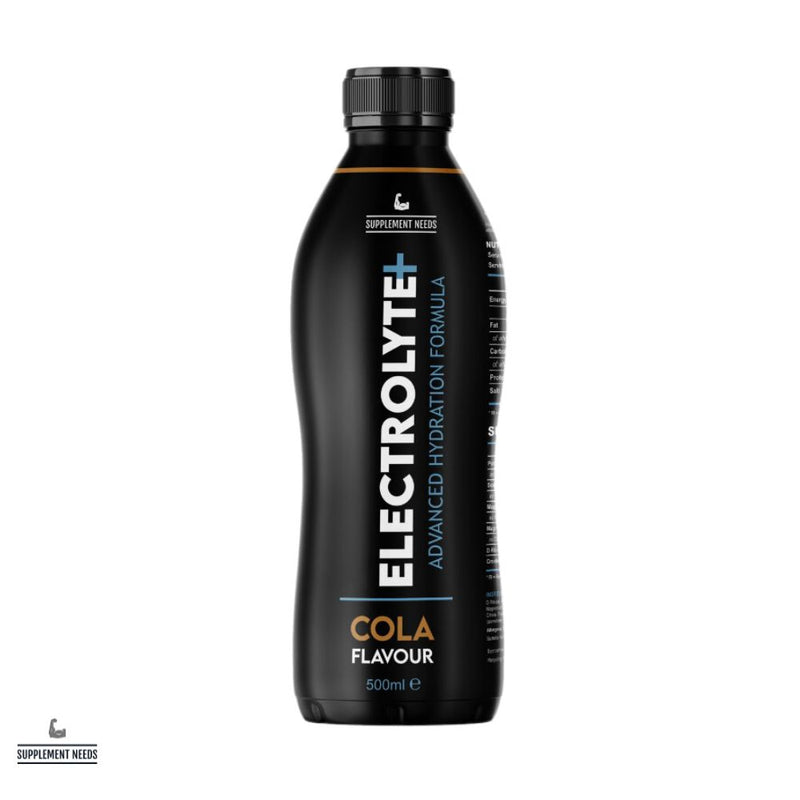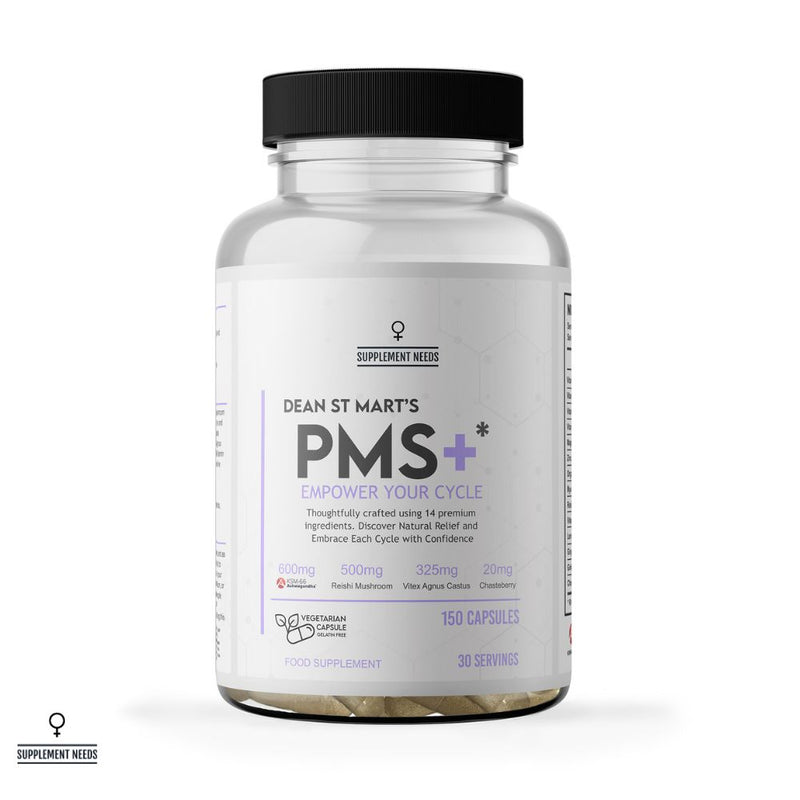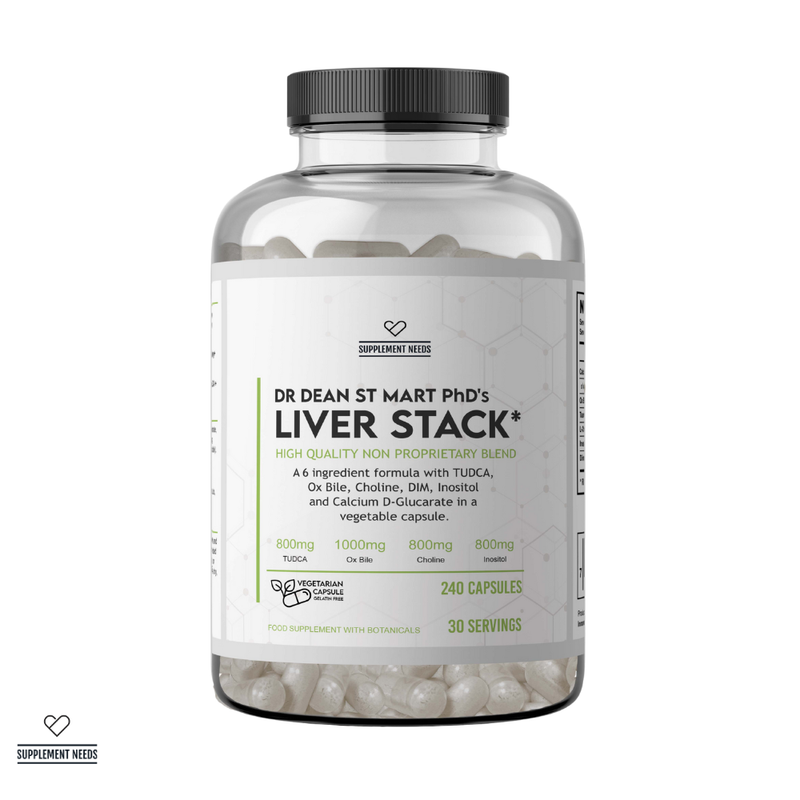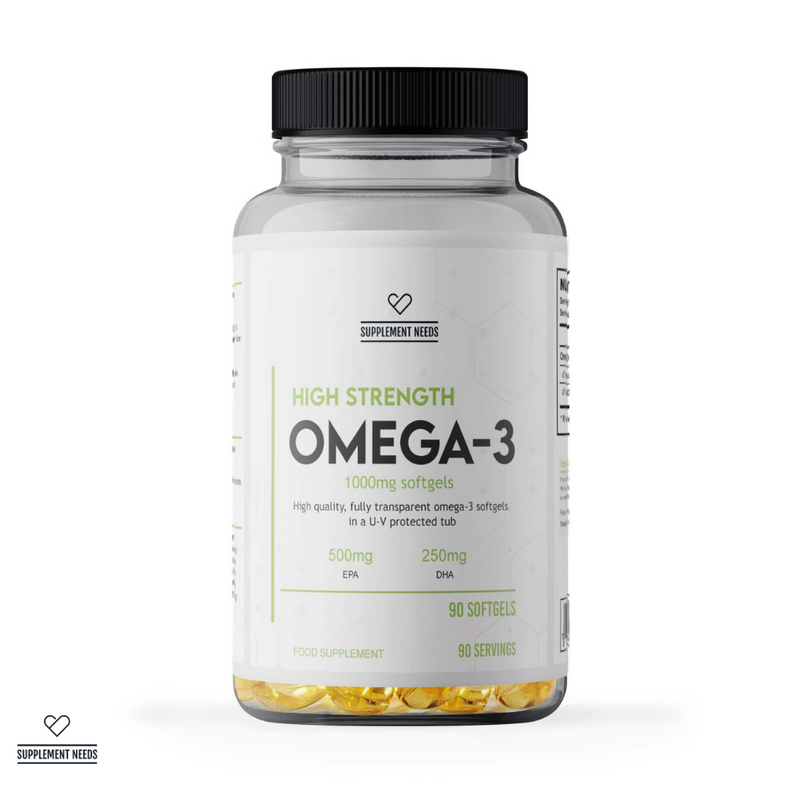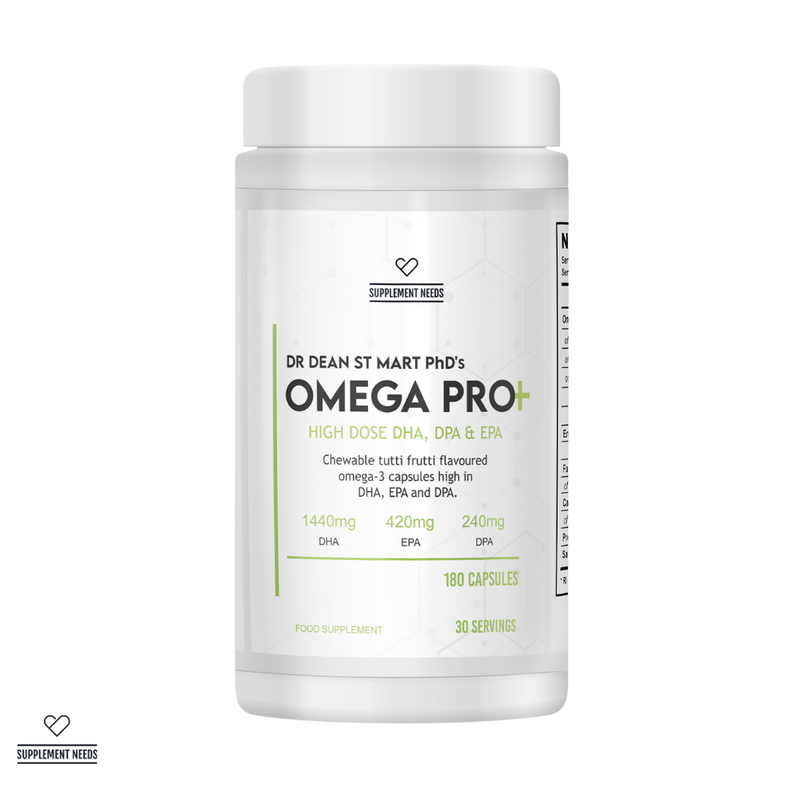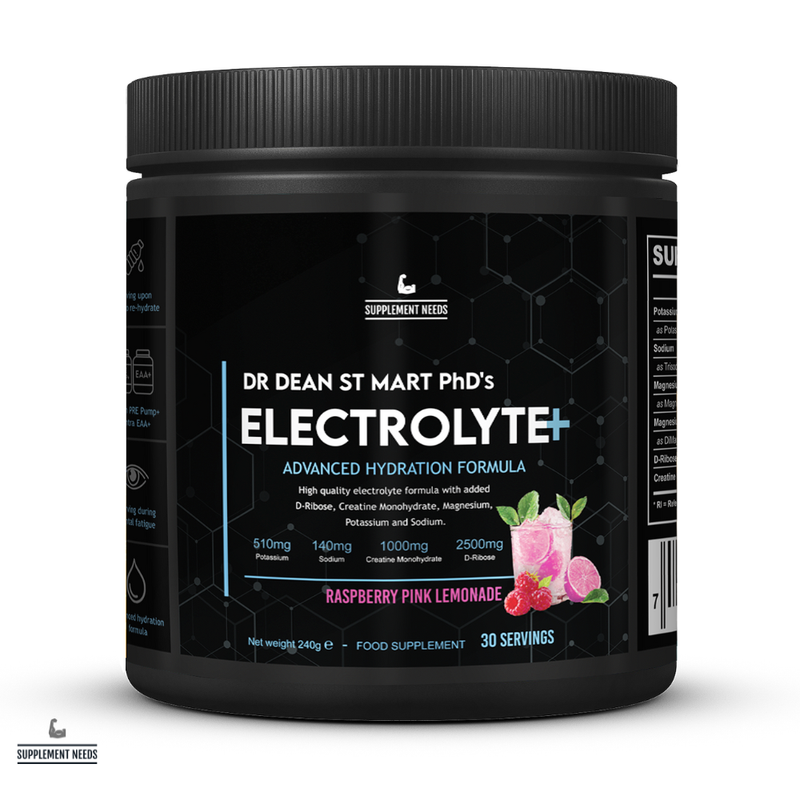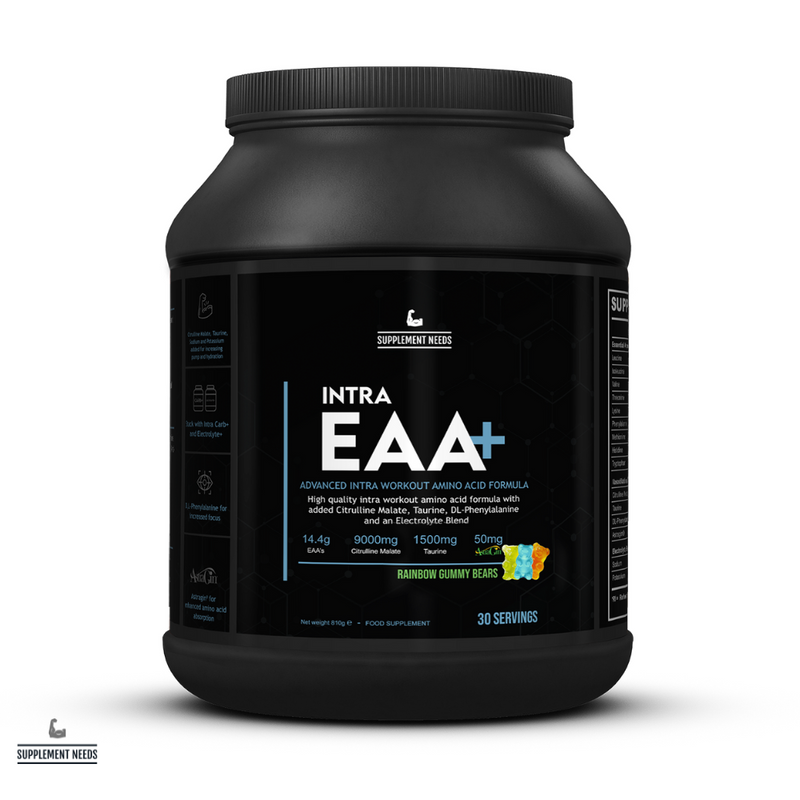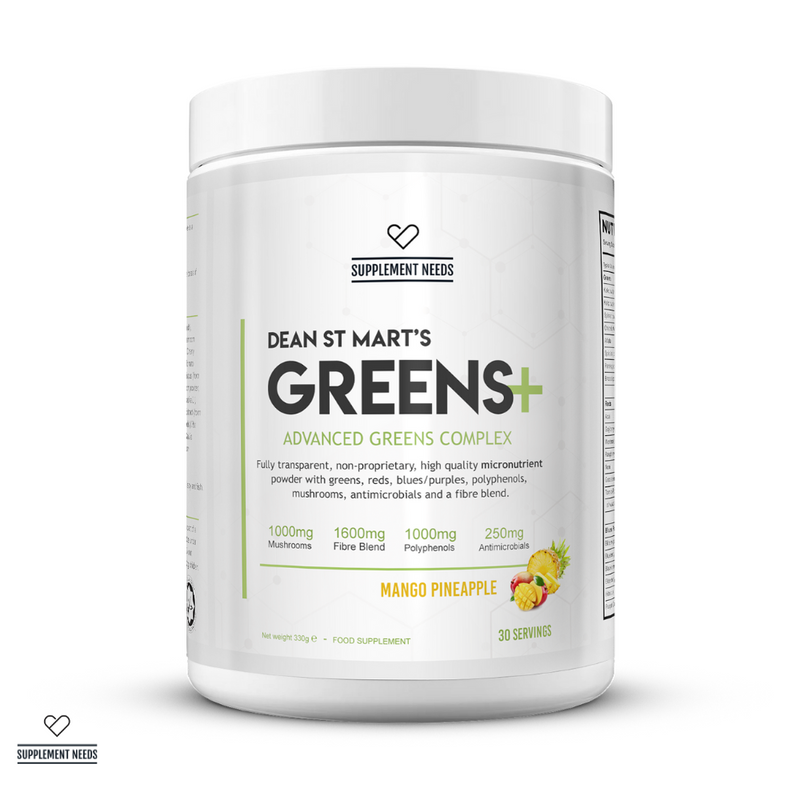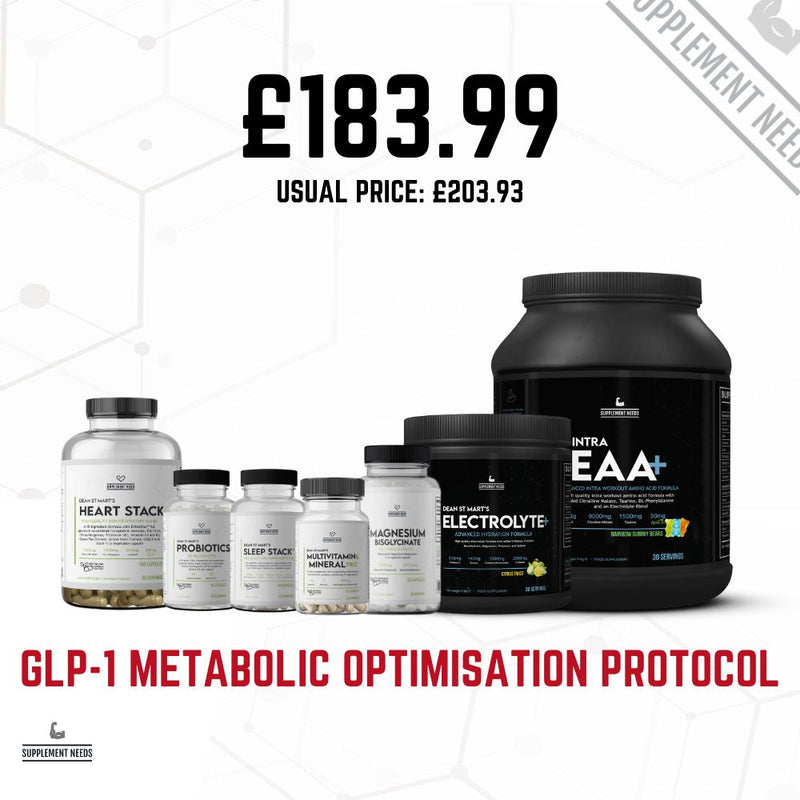A multivitamin is just a multivitamin right? Wrong! In this guide, the Supplement Needs team will demonstrate why cheap supermarket and health store multivitamins are very often a false economy. We’ll also explain what you should be looking for to ensure you end up with effective, good quality multivitamins…
Vitamins vs multivitamins: what’s the difference?
If you’re new to the world of multivitamins (and supplements in general), it’s easy to be confused by the various names, titles and terminology that get thrown around.
When it comes to the world of vitamins supplements, you’ll mostly encounter two terms; vitamins and multivitamins.
These refer to two different, distinct products:
- Vitamin supplements - these are supplements that contain a single, concentrated dose of one vitamin. Vitamin supplements are ideal for instances when you are trying to tackle a deficiency of a particular vitamin in your body.
- Multivitamin supplements - these are supplements that contain a blend of multiple vitamins (typically at varying doses)1. Multivitamins have the benefit of allowing you to take a range of vitamins within a single daily dose. Because of this, you’ll often see multivitamins referred to as multis.
It’s important to note that there is a third, less common type of supplement that you’ll find on the market. These are multivitamin and mineral supplements. As the name suggests, these are supplements that contain a blend of both vitamins and minerals.
Here at Supplement Needs, we take this third approach with our Multivitamin and Mineral PRO supplement that offers a carefully researched and crafted blend of vitamins and minerals.
Note - it’s very important to remember that there is no set definition as to what a vitamin supplement or multivitamin supplement is2. As a result, different brands of vitamins and multivitamins have different compositions.
Vitamins or multivitamins: which is best for you?
Okay, so we’ve established what the difference is between vitamin supplements and multivitamin supplements.
The next question you’re likely to have on your lips is, ‘which one is right for me?’
The answer to this ultimately comes down to your own individual health status and circumstances.
However, all things being equal, if you’re looking to improve your general health and wellbeing, then a multivitamin supplement may be the best place to start as it’ll provide a mix of vitamins rather than a single vitamin.
Note - always seek professional medical advice before taking supplements of any kind (including multivitamins).
What do multivitamins contain?
As we mentioned earlier, there is no hard and fast definition as to what a multivitamin supplement will contain. It very much varies from brand-to-brand.
However, as a general rule, you should expect a multivitamin supplement to contain the following:
Water-soluble vitamins
Water-soluble vitamins comprise Vitamin C (also known as ascorbic acid) and the B group of vitamins (Vitamin B1, Vitamin B2, Vitamin B3, Vitamin B5, Vitamin B6, Vitamin B7, Vitamin B9, and Vitamin B12).
As we’ve written previously, these water-soluble vitamins play important roles within the body - typically as coenzymes - supporting your body’s metabolic processes.
Put in more simple terms, water-soluble vitamins contribute to brain function, immune system function, conversion of foodstuffs into usable energy and more.
Given their composition, body homeostasis of water-soluble vitamins is dependent upon their absorption via the intestinal tract3.
Also, as the body cannot synthesise water-soluble vitamins (except a degree of endogenous synthesis of niacin), these vitamins need to be obtained from external sources4. That’s a technical way of saying that your body cannot produce water-soluble vitamins itself - instead, you must obtain them from foodstuffs (e.g. plants and animals that you eat).
The fact that the body cannot synthesise water-soluble vitamins - and that the body readily absorbs them and cannot store excess amounts for later use5 - means that they must be replenished on a daily basis. However, this does have the benefit of reducing any potential toxicity, as water-soluble vitamins don’t accumulate within the body.
Fat-soluble vitamins
The second group of vitamins that you’ll typically find within multivitamin supplements are fat-soluble vitamins.
Fat-soluble vitamins include Vitamin A, Vitamin D, Vitamin E, and Vitamin K. Fat-soluble vitamins play integral roles in multiple physiological processes including vision, immune function, coagulation and bone health6.
Like water-soluble vitamins, fat-soluble vitamins are absorbed via the body’s intestinal tract. The body absorbs fat-soluble vitamins into newly forming micelles (micelles being a fat droplet) in the small intestine.
In contrast to water-soluble vitamins, fat-soluble vitamins are stored by the body over longer periods of time (mainly within adipose tissue and the liver).
Minerals
The best quality multivitamin supplements will typically contain a series of minerals.
In contrast to vitamins, which are derived from organic sources (such as plants and animals), minerals are inorganic - meaning they are derived from rocks, soil and water.
Like vitamins, minerals can be divided into two distinct groups:
- Macrominerals - these are minerals that your body requires in larger amounts (over 100mg) and include minerals such as calcium and phosphorus.
- Trace minerals - these are minerals required in only small amounts by your body. Examples of trace minerals include copper, zinc, and cobalt.
In terms of the exact minerals that you’ll find in multivitamin supplements, you’ll find that it varies significantly by brand.
Here at Supplement Needs our Multivitamin and Mineral PRO supplement contains a mix of minerals that we see as being particularly suitable for supplementation. These minerals include Boron, Chromium, Copper, Iodine, Magnesium, Manganese, Molybdenum, Selenium, and Zinc.
Cheap multivitamins: why you should avoid them
We realise we’ve delved into a fair bit of detail there, but it’s for good reason. You require the context provided above in order to truly grasp what follows. Below, you’ll find the key reasons why you should avoid cheap multivitamins.
Bioavailability
If there’s one thing to remember from this article it’s this - bioavailability.
Put in straightforward terms, bioavailability refers to the extent to which a substance becomes available to its intended biological destination8.
Bioavailability - which is a portmanteau of biological availability - in effect influences the degree and rate at which a metabolite (an intermediate or end product of metabolism) enters the body’s circulatory system and thus on to the ‘site of action’9.
Sites of action can be anatomical (e.g. tissues), cellular (the cell the vitamin or mineral has to reach), or molecular (the molecular target to which the vitamin or mineral needs to bind e.g. cell surface receptor)10.
We appreciate this all sounds rather technical, so let’s simplify things for a moment.
If a multivitamin is more bioavailable then it means that more of the overall volume of vitamins and minerals it contains can be absorbed more quickly and efficiently by your body.
Think of bioavailability this way - if a vitamin or mineral were to be directly administered into your bloodstream, then it would be 100% bioavailable. However, there are very few people who’d want a multivitamin injection every day. Thus, less intrusive methods of administering multivitamins such as oral tablets are more common.
However, as your body isn’t completely efficient, some of the vitamins and minerals from the supplement will be destroyed by stomach acid etc. In other words, the process of digestion means that some of the minerals and vitamins are lost before they reach your bloodstream.
Thus, the more bioavailable a supplement is (e.g. if it’s much more easily digested by the body), the more of the essential vitamins and minerals within it are actually going to reach the bloodstream and from there the parts of the body where they can take effect.
Bioavailability is highly influenced by the way multivitamin supplements are designed and manufactured.
In the case of those cheap multivitamin supplements you see in the supermarket, these tend to use cheap synthetic fillers, binders and excipients (basically substances that act as ‘vehicles’ to hold and transmit the vitamins and minerals in a supplement). As studies have indicated, the bioavailability of nutrients is highly variable and can be influenced by numerous factors11.
As a result, poorly designed and manufactured multivitamins (we’re looking at you, cheap supplements!) are unlikely to have efficient bioavailability.
So, what’s the long and short of this?
If you buy cheap multivitamins that have poor bioavailability, your body is unlikely to absorb sufficient amounts of the supplement’s vitamins and minerals to make a tangible difference to your wellbeing.
In other words, with cheap multivitamins you are more likely to pee out the vitamins and minerals as your body won’t have been able to absorb them.
Active vitamins
Another key difference between cheap multivitamins and truly high-quality multivitamins is that the latter will include the active form of vitamins. Cheap multivitamins on the other hand will typically contain the inactive version of vitamins.
Is this a big deal? Yes!
Active vitamins are those forms of vitamins that are in their most active form - in other words, they are more bioavailable, being able to be absorbed by the body in great volumes at faster rates.
A classic example of this is Vitamin B12. Two active forms of this vitamin include Methylcobalamin and adenosylcobalamin. Two other forms of B12, Hydroxycobalamin and Cyanocobalamin, only become biologically active once they have been converted to Methylcobalamin or 5-deoxyadenosylcobalamin12.
Furthermore, there are synthetically-derived forms of B12 such as Cyanocobalamin (CNCbl). As studies have shown13, the assimilation pathway of CNCbl (e.g. its bioavailability) is inferior compared to the natural bioavailable forms of B12 e.g. Methylcobalamin.
Let’s put the technical talk aside for a moment….
What does this mean for the average person in the street looking for an effective multivitamin supplement?
At the risk of oversimplifying things, cheap multivitamin supplements typically contain the inactive forms of vitamins, whilst higher-quality multivitamin supplements contain the active forms of vitamins - the forms that are far more likely to be absorbed and used by your body.
Our key piece of advice is to always check the label of a multivitamin.
In this complete guide to multivitamins, we have set out a table that shows the inactive and inactive forms of vitamins - simply refer to this when you’re assessing a multivitamin supplement, and you’ll ensure you select only the best multivitamin supplement!
Chelated minerals
“Right, so I need to check for the active form of vitamins in a multivitamin supplement. Got it. What next?”
We got you.
The next thing to check in a multivitamin supplement is the form of minerals that are included. Think of it in a similar fashion to inactive versus active minerals.
We’re talking about standard minerals versus chelated minerals.
Let us explain a bit more…
Like vitamins, the absorption of minerals occurs in the gastrointestinal tract - with the bulk of absorption occurring within the small intestine14.
Consumed minerals must be absorbed across the gastrointestinal mucosa (also known as the mucous membrane) and pass into the bloodstream in order to provide value to the body.
However, as minerals are inorganic compounds, they can prove difficult for your body to absorb. For example, the absorption of important minerals like Chromium can be as low as 0.4 - 2.5%15.
So, what is to be done?
Well, in the case of types of supplementation like multivitamin supplements, the answer lies in using the chelated form of minerals.
Chelated minerals are minerals which have been chemically combined with what is known as a ‘chelating agent’. This chelating agent is an amino acid or other type of organic acid.
Because the human body is very efficient at absorbing amino acids, when a mineral is chelated to an amino acid it will be carried along with said acid into the intestinal cell during absorption.
The result is that chelated minerals are more effectively absorbed by the body. Don’t just take our word for it though. There are multiple studies that provide credence to this view. For example, one study16 found that chelated Zinc (as zinc citrate) was absorbed around 11% more effectively than non-chelated Zinc (as zinc oxide).
The key point to remember here is that very often, cheap supplements will fail to use chelated minerals - which, in a similar fashion to inactive vitamins - will result in suboptimal absorption into your body.
Again, you’ll end up peeing out the minerals rather than them being properly absorbed and used by your body!
As with the case of inactive versus active vitamins, always check the label on multivitamin supplements. Refer to our guide here where we have listed many of the common chelated minerals that are included in quality supplements.
Transparent dosing
All too often cheap multivitamins will claim they contain a range of essential vitamins and minerals.
They may contain these vitamins and minerals, but at what doses?
This is a key point that is often overlooked when people are buying multivitamins. A multivitamin is only worth purchasing if it contains vitamins and minerals at efficacious doses.
If you’re unsure what doses of particular vitamins you should be looking for, check our guide which sets out the UK Government daily recommended intakes of the essential vitamins.
Again, our key piece of advice on this point is to check the label! This should set out the complete ingredients within the multivitamin and their respective doses.
In addition to the doses of the vitamins and minerals, a multivitamin supplement should also be transparent about the types of other ingredients it contains such as anti-caking agents, bulking agents etc.
Look out for suspect ingredients
Closely related to the point above, is that some cheap multivitamins can include rather ‘suspect’ ingredients.
It’s not unheard of to find ingredients such as hydrogenated palm oil (yes, a trans-fat!) and even unusual ingredients like Titanium Oxide17 in cheap supplements.
Want our advice? If you spot an ingredient that looks out of place, avoid the supplement in question!
Quality and safe manufacture
Do you know where and how your multivitamins have been made? If a multivitamin brand can’t provide you with a satisfactory answer to this question, avoid them!
So, how can you tell if a multivitamin supplement has been manufactured in a safe, quality manner?
Look for multivitamins that have been manufactured in-line with GMP manufacturing standards. GMP stands for ‘Good Manufacturing Practice’ and sets out the minimum standards that manufacturers must meet in their production processes.
In order to be compliant with GMP standards, products must be; of consistent high quality, be appropriate for their intended use, and meet the requirements of the marketing authorisation or product specification.
Here in the UK, the GMP standards are overseen by the Medicines and Healthcare products Regulatory Agency (MHRA).
At Supplement Needs we ensure that all our products are designed and manufactured in line with GMP standards with Certificate of Analysis (CoA) traceability
We also manufacture and design our products under ISO 22000:2018 - an international standard which allows manufacturers to identify, monitor, reduce and prevent food safety hazards at any stage of the food chain. ISO 22000:2018, manufacturers are also required to set out and manage a Food Safety Management System (FSMS).
That’s not all. Supplement Needs also manufactures our supplements using the BSI (British Standards Institute) HACCP (Hazard Analysis Critical Control Points) risk management tool which allows us to strictly manage any food safety risks. The HACCP system allows us to identify any potential hazards and thus put in place controls to manage these hazards throughout our supply chain during production.
As you can see, there’s a lot that goes into manufacturing supplements in a safe and compliant way.
Credentials
There’s a considerable amount of science that goes into the development of safe, trustworthy and effective multivitamins.
Or at least there should be.
Do you know who has developed the multivitamin you’re going to take?
In the case of cheap multivitamins, this isn’t always clear - and that should be a red flag.
We strongly recommend checking out the credentials behind a supplement brand. Here at Supplement Needs we are pleased to say that our supplements are developed by Dr Dean St Mart PhD.
Dean holds a double first honours degree in chemistry and pharmaceutical chemistry as well as a PhD in synthetic organic chemistry and fluorescence spectroscopy. As Supplement Needs’ Product Manager and Formulator, Dean uses this formidable knowledge and expertise to ensure our products are as safe and effective as possible.
Can those cheap supermarket and bargain bin supplement brands say the same?
Want a quality multivitamin? Then you’ve just found it
As the above information (hopefully!) makes clear - it’s just not worth buying cheap multivitamins. They truly are a false economy and will result in you literally peeing your money away!
On the other hand, if you want a multivitamin that ticks all the boxes as to what a quality, effective multivitamin should be, then choose the Supplement Needs Multivitamin and Mineral PRO.
Developed by experts to be the foundational part of a healthy lifestyle, our Multivitamin and Mineral PRO is Halal Trust certified, highly-absorbable, contains 19 important vitamins and minerals and is manufactured to ISO and GMP (Good Manufacturing Practice) standards.
Plus, we offer free delivery on all orders over £20.
Shop the Supplement Needs Multivitamin and Mineral PRO now
Disclaimer
The information on this website should not be used as a substitute for professional medical advice or care. If you have questions about your health, please contact your doctor.
References
1. National Institutes of Health Office of Dietary Supplements: Multivitamin/vitamin Fact Sheet for Consumers. Available from: https://ods.od.nih.gov/factsheets/MVMS-Consumer/ (Accessed 20th September 2023).
2. National Institutes of Health Office of Dietary Supplements: Multivitamin/vitamin Fact Sheet for Consumers. Available from: https://ods.od.nih.gov/factsheets/MVMS-Consumer/ (Accessed 20th September 2023).
3. Hamid M. Said. (2014). Intestinal absorption of water-soluble vitamins in health and disease [online]. Available from: https://www.ncbi.nlm.nih.gov/pmc/articles/PMC4049159/ (Accessed 20th September 2023).
4. Hamid M. Said. (2014). Intestinal absorption of water-soluble vitamins in health and disease [online]. Available from: https://www.ncbi.nlm.nih.gov/pmc/articles/PMC4049159/ (Accessed 20th September 2023).
5. Jacqueline Lykstad, Sandeep Sharma. (2023). Biochemistry, Water Soluble Vitamins [online]. Available from: https://www.ncbi.nlm.nih.gov/books/NBK538510/# (Accessed 20th September 2023).
6. Priya Reddy, Ishwarlal Jialal. (2022). Biochemistry, Fat Soluble Vitamins [online]. Available from: https://www.ncbi.nlm.nih.gov/books/NBK534869/# (Accessed 20th September).
7. Priya Reddy, Ishwarlal Jialal. (2022). Biochemistry, Fat Soluble Vitamins [online]. Available from: https://www.ncbi.nlm.nih.gov/books/NBK534869/# (Accessed 20th September).
8. Gary Price, Deven A. Patel. (2023). Drug Bioavailability [online]. Available from: https://www.ncbi.nlm.nih.gov/books/NBK557852/# (Accessed 20th September 2023).
9. Jennifer Le. (2022). Drug Bioavailability [online]. Available from: https://www.msdmanuals.com/en-gb/professional/clinical-pharmacology/pharmacokinetics/drug-distribution-to-tissues (Accessed on 20th September 2023).
10. Remi Longuespee, Dirk Theile, Margaux Fresnais, Jurgen Burhenne, Johanna Weiss, Walter E. Haefeli. (2020. Approaching sites of action of drugs in clinical pharmacology: New analytical options and their challenges [online}. Available from: https://bpspubs.onlinelibrary.wiley.com/doi/full/10.1111/bcp.14543# (Accessed on 20th September 2023).
11. H. C. Schonfeldt, B. Pretorius, N. Hall. (2015). Bioavailability of Nutrients [online]. Available at: https://www.sciencedirect.com/science/article/abs/pii/B9780123849472000684 (Accessed on 20th September 2023).
12. Allen LH. Vitamin B12. In: Coates PM, Betz JM, Blackman MR, et. al., eds. Encyclopaedia of Dietary Supplements. 2nd ed. London and New York: Informa Healthcare; 2010:812-20.
13. Cristiana Paul, David M Brady. (2017). Comparative Bioavailability and Utilisation of Particular Forms of B12 Supplements with Potential to Mitigate B12-related Genetic Polymorphisms [online]. Available at: https://pubmed.ncbi.nlm.nih.gov/28223907/ (Accessed on 20th September 2023).
14. Jess P. Goff. (2018). Mineral absorption mechanisms, mineral interactions that affect acid-base and antioxidant status, and diet considerations to improve mineral status [online]. Available from: https://www.sciencedirect.com/science/article/pii/S0022030218300614# (Accessed on 20th September 2023).
15. Vincent JB. Chromium In: Marriott BP, Birt DF, Stallings VA, Yates AY, eds. Present Knowledge in Nutrition 11th ed. Cambridge, MA: Elsevier; 2020:457-65.
16. Rita Wegmuller, Fabian Tay, Christophe Zeder, Marica Brnic, Richard F Hurrell. (2014). Zinc absorption by young adults from supplemental zinc citrate is comparable with that from zinc gluconate and higher than from zinc oxide [online]. Available from: https://pubmed.ncbi.nlm.nih.gov/24259556/ (Accessed on 20th September 2023).
17. Matej Skocaj, Metka Filipic, Jana Petkovic, Sasa Novak. (2011). Titanium dioxide in our everyday life; is it safe? [online]. Available from: https://www.ncbi.nlm.nih.gov/pmc/articles/PMC3423755/ (Accessed on 20th September 2023).
